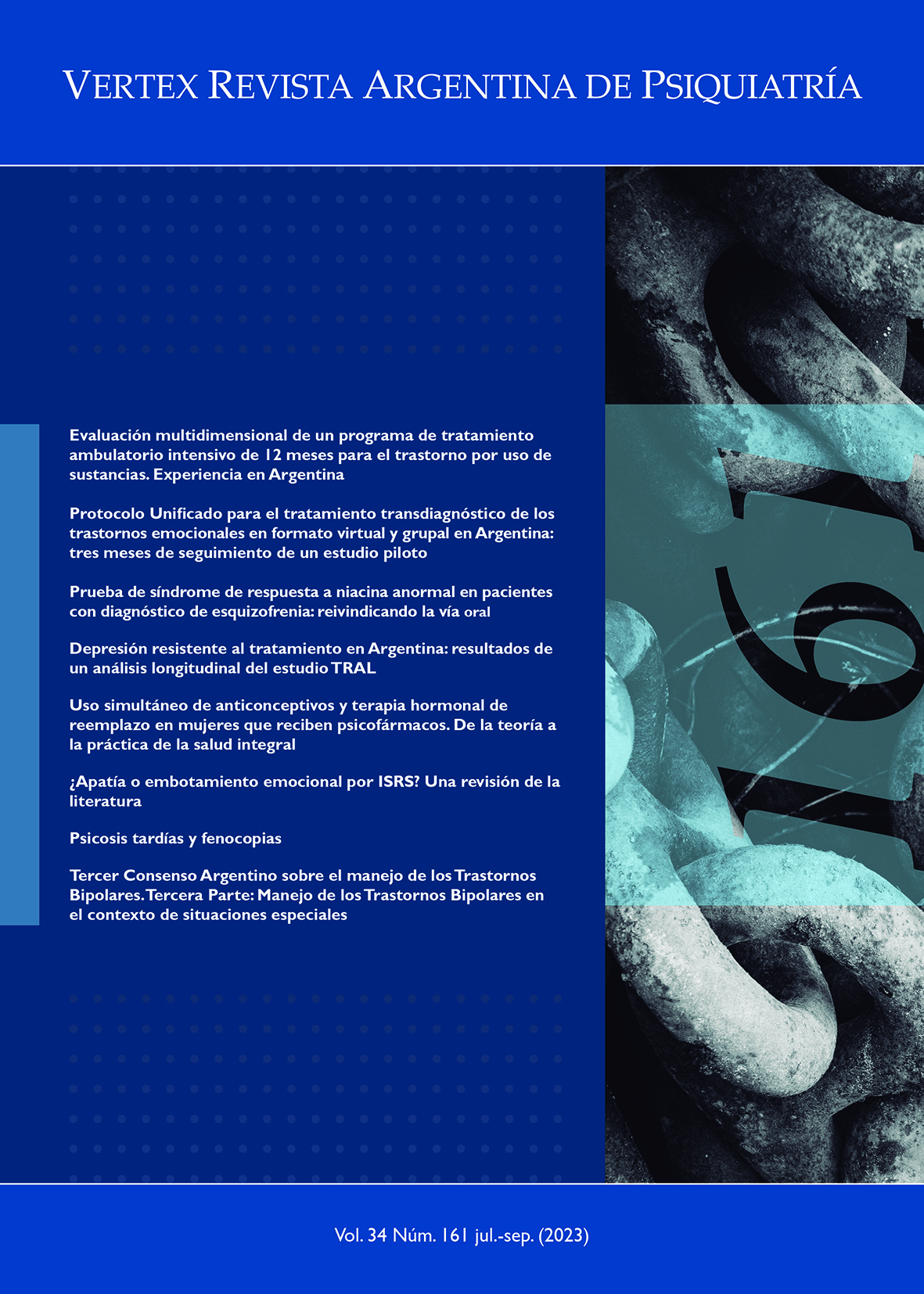Multidimensional evaluation of a 12-month intensive outpatient program for the treatment of substance use disorder. Experience in Argentina
DOI:
https://doi.org/10.53680/vertex.v34i161.481Keywords:
Intensive outpatient treatmen, Addiction, Addiction Severity Index, WHOQOL-Bref questionaireAbstract
Objective: The purpose of this study was to asess the efficacy of an intensive outpatient treatment (IOT) for substance use disorder (SUD) using a multidimensional approach. Methods: All the patients consecutively admitted to a private institution between May 2019 and May 2020 were invited to participate in the study. The program consisted in a 12-month set of psychosocial, medical and recreative interventions requiring an attendance of at least 9 hours per week. Efficacy was evaluated at admission and every three months by the Addiction Severity Index (ASI). Quality of life was evaluated at admission and at the end of the treatment by the WHOQOL-Bref questionnaire. A comparison of parameters obtained at admission between the group that completed and the one that abandonned the treatment was also performed to detect potential predictors of early dropout. Six months after the end of the treatment, the participants were contacted in order to repeat an evaluation through the ASI and the WHOQOL-Bref scales. Results: 41 participants (73% male, age 42.8 ± 16 years) were included. 14 participants dropped out at a median time of 88 days. Among those who completed the treatment improvements were observed in different clinical dimensions: in alcohol and drug consumption (3 months), in medical problems (6 months), in family/social relationships (9 months), in psychological scores (12 months) and in the four dimensions of WHOQOL-Bref. No changes were observed in legal problems and in the employment status. Only legal problems and family/social relationships at admission were significantly different among patients who completed versus those who dropped-out. Six months after discharge, no differences in WHOQOL-Bref scores were observed in the 15 participants who could be located and accepted the assessment. A little but statistically significant worsening was observed in the psychological problems dimension of the ASI in post-discharge follow-up. The rest of the ASI dimensions remained unchanged 6 months after concluding the treatment. Conclusion: This is one of the few studies performed in a latinamerican setting assessing the efficacy of a long-term IOT for SUD. It confirms previous works from developed countries, showing the potential benefits of IOTs implementation in our region.





